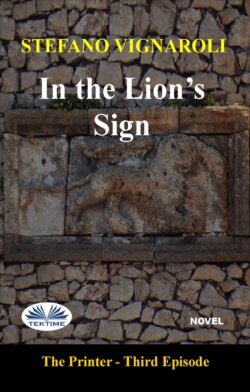Читать книгу In The Lion's Sign - Stefano Vignaroli, Stefano Vignaroli - Страница 4
ОглавлениеPREFACE
In The Lion’s sign concludes the trilogy of Renaissance settings, entitled The Printer, preceded by “The Shadow of the Bell Tower” and “The Bronze Crown”. Protagonists, once again, are the indomitable leaders, the Marquis Andrea Franciolini, and the Countess Lucia Baldeschi, condemned by fate to constantly postpone the wedding, the seal of a great love. And with them, their descendants, the homonymous of nowadays Andrea and Lucia. The unexpected call to arms, which came from the Duke of Urbino on the day of the wedding, forces Andrea to go, through a perilous journey, first to northern Italy and then to the Netherlands, and Lucia takes again the charge of the regency of the city of Jesi and its county. So the narration splits: on one side there is the errant knight and his adventures, studded and enriched by the encounter with historical characters, as in the case of the cunning and ruthless Giovanni Dalle Bande Nere and the rival first and friend then, Duke Franz Vollenweider, mercenary, half trickster and half Lansquenet. On the other hand, Lucia, a caring mother, a lover with intense passions and a pink governess in an era dominated by men, who in the only Bernardino, the printer, finds a shoulder, a confidant and an ally. In the background, the clash between the Emperor Charles V and the Pope with his allies, from the King of France to the various lords of Italian cities, who made and broke alliances with Machiavellianism. Battles, intrigues, love, moonlight Sabbath and, above all, two great mysteries, emerged from the bowels of the earth, from the excavations in the square overlooking the Palazzo della Signoria (the Government Palace) in Jesi, tie and mark the events of the two Lucia and the Andrea of yesterday and today. An ancient codex, wanted and coveted even by Hitler, and an icon, depicting the transverse lion, symbol of the city, disturb dreams, generate anguish and lust for knowledge and lead to action. A fluid prose returns not only the colours, but also the sounds and atmospheres of places and situations and chains the reader to the page, from the first to the last chapter, in a crescendo of interest for the fate of the protagonists. Vignaroli signs a great historical fresco, in a mixture of fantasy and erudition, which worthily seals the last act of a great trilogy.
Marco Torcoletti
